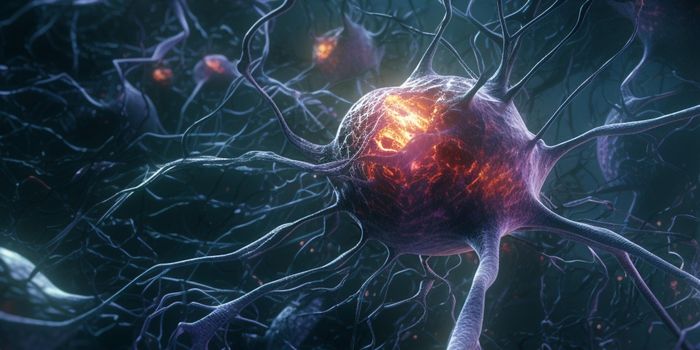An Ancient Viral Remnant May Underlie ALS
The human genome contains many sequences that came from ancient viruses. As much as 42 percent of the human genome may be made up of these sequences, so-called retrotransposons. It's been thought that most of these regions are not usually expressed, but sometimes things go wrong, and those genetic regions might become active. Retrotransposon activity can have a wide array of impacts on the human genome; they can cause deletions, duplications, new transcripts, rearrangements, and the creation of new regulatory regions.
Several studies have connected amyotrophic lateral sclerosis (ALS) to retrotransposons. For example, research has linked the expression of one ancient viral sequence, a retrotransposon known as HERV-K to ALS.
ALS causes motor neurons to rapidly degenerate, leading to serious muscle weakness. Eventually, the muscles involved in speaking, swallowing, and breathing are affected. The disease is often fatal within five years of diagnosis die to respiratory failure. There are only a few treatments that can somewhat limit the progression of the disease, and there is no cure.
Now researchers have made another connection between retrotransposons and ALS. The findings have been reported in eLife.
Previous work has shown that about ten percent of ALS cases arise due to mutations in a gene called UBQLN2. This study has explained why that happens. UBQLN2 was shown to regulate the retrotransposon called PEG10 (paternally expressed gene 10).
"Our work suggests that when this strange protein known as PEG10 is present at high levels in nerve tissue, it changes cell behavior in ways that contribute to ALS," said senior study author Alexandra Whiteley, assistant professor at the University of Colorado at Boulder.
PEG10 is a domesticated retrotransposon; it probably was once a huge benefit to us, and seems to be have given rise to the placenta during human evolution. Transposon domestication provides a way for the host genome to innovate.
But if these proteins become active when they should not be, it can lead to serious problems, such as certain types of cancer, or neurological diseases. "Domesticated is a relative term, as these virus-like activities may be a driver of neurodegenerative disease," she said. "And in this case, what is good for the placenta may be bad for neural tissue."
This work showed that abnormally high levels of PEG10 are found in samples of ALS patients' spinal cord tissue. There, the PEG10 is probably disrupting the communications between neurons.
A protein expression analysis of samples from deceased ALS patients showed that PEG10 had a strong link to ALS. Additional work revealed that PEG10 accumulates because of the problems with ubiquilin, which should normally act as a brake on PEG10. Once unleashed, PEG10 builds up, disrupting axons in neurons, and nerve communication.
PEG10 was found at high levels in ALS patients who have inherited forms of the disease as well as other patients with sporadic ALS. "It appears that PEG10 accumulation is a hallmark of ALS," said Whiteley.
"The fact that PEG10 is likely contributing to this disease means we may have a new target for treating ALS," Whiteley added. "For a terrible disease in which there are no effective therapeutics that lengthen lifespan more than a couple of months, that could be huge."
Sources: University of Colorado at Boulder, eLife









